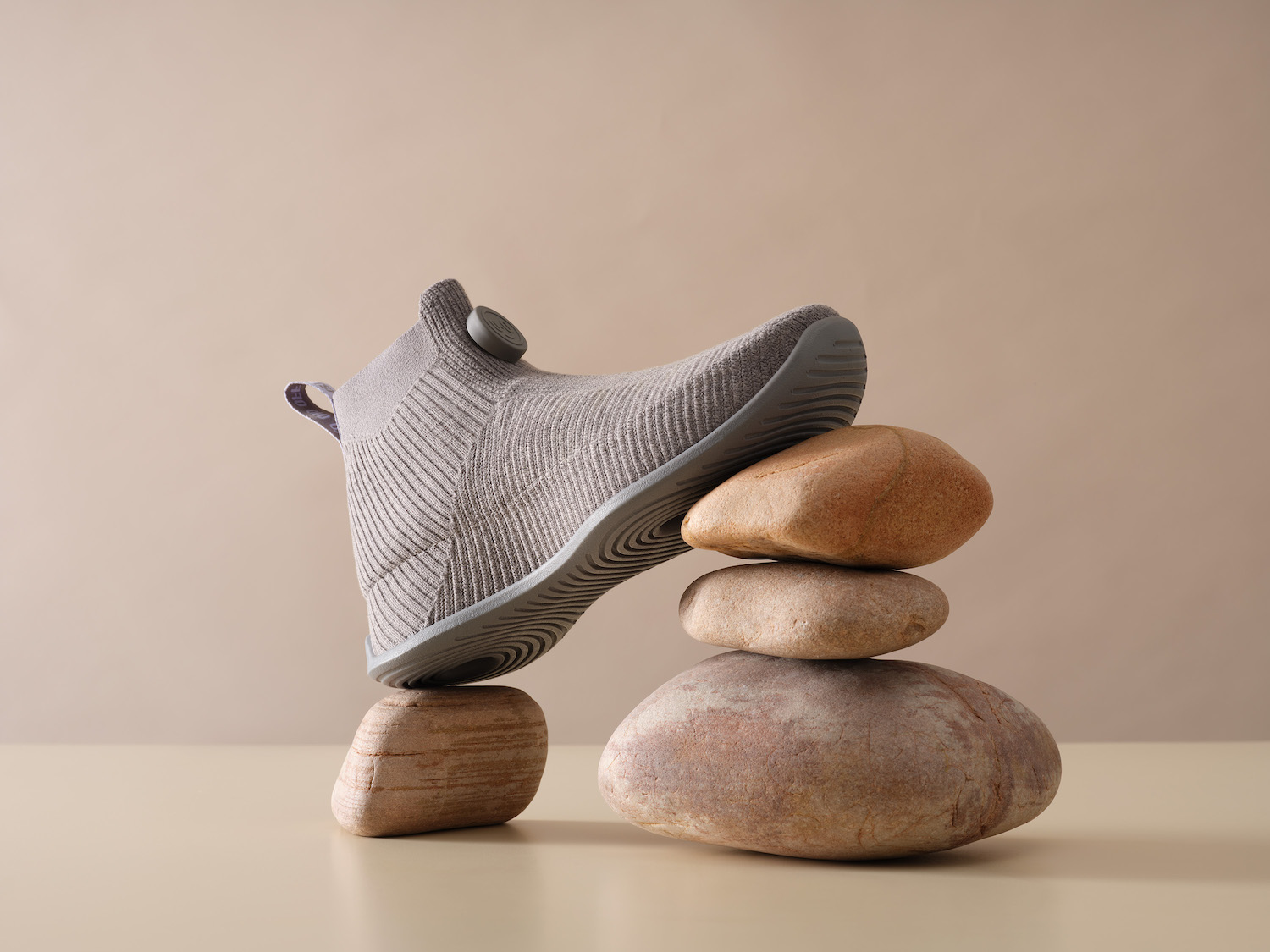
The world’s first net-zero shoe is here. Allbirds' recently unveiled high-top shoe, called M0.0NSHOT, is slated for commercial release next spring. Urging others to follow its lead, the cult favorite footwear and apparel brand released all of the information necessary for companies to create their own net-zero shoes — from design to manufacturing to carbon measurement. And the recipe doesn’t rely on purchasing carbon offsets.
“You would normally think a company brings in a new material to their products and they want keep it safe because it's proprietary,” Aileen Lerch, Allbirds’ senior sustainability officer, told TriplePundit. “But in the case of a lot of these solutions, especially to climate change, we actually need an industry-wide adoption for this to become a scalable solution [and] for costs to come down.”
The path to a net-zero shoe
The M0.0NSHOT net-zero shoe isn't Allbirds first foray into climate action and low-carbon materials. The company first created SweetFoam, a midsole foam made from carbon-negative, sugarcane-derived bioplastic, back in 2018. Its latest iteration of the material is used in the midsole of the new M0.0NSHOT shoe.
Allbirds also became the first fashion brand to label products with carbon footprints in 2020. It then partnered with Adidas to make what was the lowest-carbon shoe in the world at the time, the Adizero x Allbirds, before it began developing M0.0NSHOT.
“It’s rare in the footwear industry for two brands to come together and create a shoe. You almost never see it,” Lerch said. “It was this moment that we really recognized, ‘Hey, we’re running the wrong race here. It’s not about us versus them, or two footwear companies competing against each other. We’re all trying to do the same thing and decarbonize our businesses.”
The design
The M0.0NSHOT shoe uses carbon-negative, regenerative wool sourced from Lake Hawea Station, a sustainable sheep and beef farm in New Zealand that sequesters more carbon than it emits. Along with the new sugarcane midsole foam, it's also made with methane-capture bioplastic via a partnership with Mango Materials and sugarcane-based polyethylene packaging, another carbon-negative material that reduces the weight and space required for transportation.
“We didn’t just make the world’s first net-zero carbon shoe. We also made the second, third, fourth net-zero carbon shoe, and so on, as we explored different prototypes to create an appropriate visual identity for this milestone,” Jamie McLellan, design lead on the project, said in a statement. “As we thought about this ‘shoe of the future,’ we were clear that M0.0NSHOT couldn’t look like something from the past. We’ve not just reimagined the science of a sustainable shoe, we’ve reimagined the design, too.”

Will the footwear industry follow suit?
But Allbirds isn’t stopping at creating a net-zero shoe. The company is looking at what it calls the “five lifecycle areas” of the M0.0NSHOT shoe, which include the energy required to manufacture it, the energy used in transportation, the emissions associated with disposal, and emissions created during use — particularly those associated with washing the shoe.
“Our goal for a lot of these actions is: How do we scale it across our business and scale it across our industry?” Lerch said. “That was a lesson that we applied for this shoe, and we’re excited to keep scaling as we work toward a commitment to have 100 percent renewable energy at our tier-one factories and final assembly factories by 2025.”
Most of Allbirds’ shoes are manufactured in Vietnam, which Lerch said is “quite an interesting place” right now for brands who are advocating for renewable energy. The country’s new national energy plan looks to increase much-needed power generation and shift away from coal, but still relies on gas in combination with renewable energy. The company joined other brands and factories in signing a letter encouraging Vietnam’s energy utilities to integrate renewable energy into the power grid.
Open-sourcing the M0.0NSHOT shoe is crucial to moving the footwear industry to reduce its carbon footprint, Lerch said.
“If there was just one granola bar company labeling calories, you wouldn’t actually understand it. You need everyone to do it,” she said. “We saw that we couldn’t just stop at the product. It’s about democratizing and scaling the solutions because these are problems that are not just specific to Allbirds. We all need to be taking collective action to mitigate and reduce the impacts of climate change.”
Images courtesy of Allbirds

Gary E. Frank is a writer with more than 30 years of experience encompassing journalism, marketing, media relations, speech writing, university communications and corporate communications.














